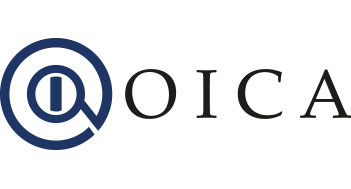ANFAVEA: Production falls 31.6% in 2020 and goes back 16 years due to the pandemic. ANFAVEA projects 25% recovery in 2021
The Associação Nacional dos Fabricantes de Veículos Automotores (ANFAVEA) released today 2020´s yearend figures, strongly impacted by the pandemic that interrupted a three-year recovery cycle, after the 2015/2016 local economic crisis. The entity also announced its projections for 2021, with moderate growth over the previous year, still insufficient to match 2019 levels.
December: best month of 2020 in sales
December was the best month of the year in sales (243,967 units), with a daily average of 11,600 units, but despite the market recovery observed during the second semester, February 2020 was the single month of the year with better average sales when compared with 2019.
The production of 209,296 units in December was a good surprise, considering all the logistical challenges, the supplies constrains and the strict health protocols. “The industry made great efforts to answer the unexpected demand, working on weekends and suspending part of the collective vacations, but it started 2021 with the lowest stock level in its history, sufficient only for 12 days of sales”, said ANFAVEA´s President, Luiz Carlos Moraes.
2020: downfall came when 10% of growth was projected
The accumulated results for 2020 presented sharp declines, but not as drastic as projected at the beginning of the pandemic. The large injection of emergency funds into the economy, as well as the strength of our agribusiness helped to mitigate the losses in the second quarter, when most of the factories and businesses were closed. Domestic market sales closed the year with 2,058,437 units, a drop of 26.2%, back to 2016 levels, the height of the last Brazilian economic crisis.
The production of 2,014,055 vehicles represented a retraction 31.6%, leaving the auto industry factories with a technical idleness of almost 3 million units. In the global ranking, Brazil will probably be surpassed by Spain (provisional data), falling to ninth place. 2020 exports of 324,330 units were the worst since 2002, a decrease of almost two decades. In values, the revenue of US$ 7.4 billion was less than half of what was exported in 2017 (US$ 15.9 billion).
The truck segment, propelled by the agribusiness and the growth of the urban e-commerce, had the lowest losses among vehicles, with a drop of 11.5% in licensing compared to 2019. Light commercial vehicles fell 16%, automobiles dropped 28.6% and buses a negative of 33.4%. Agricultural and road machinery sold 7.3% units over last year.
2021: Growth projections still require caution
For 2021, ANFAVEA foresees an increase of 15% in vehicle licensing, 9% in exports and 25% in production, insufficient figures to return to pre-pandemic 2019 levels. Machines sales are expected to grow 7%, exports 9% and production 23%.
“It has never been so difficult to project year results, as we have a foggy environment in front of us since March, when the pandemic started”, explained Luiz Carlos Moraes. “Unfortunately, a second wave of covid-19 appeared in countries in the northern hemisphere, which is likely to arrive in Brazil as well. The vaccine immunization will be a long process, taking most part of 2021, preventing a faster resumption of our economy. Adding to that, the pressure of costs, the urgent need of structural economic reforms and unpleasant surprises such as the increase in the São Paulo ICMS (state taxes), and we have before us a scenario that still inspires great caution in our forecasts”, summarized the President of ANFAVEA.
Contact:
Communication ANFAVEA
Tel: 11 2193 7800
Email: imprensa@anfavea.com.br
Download ANFAVEA press release
Download ANFAVEA January detailed data report
Download ANFAVEA Media presentation (Portuguese)
